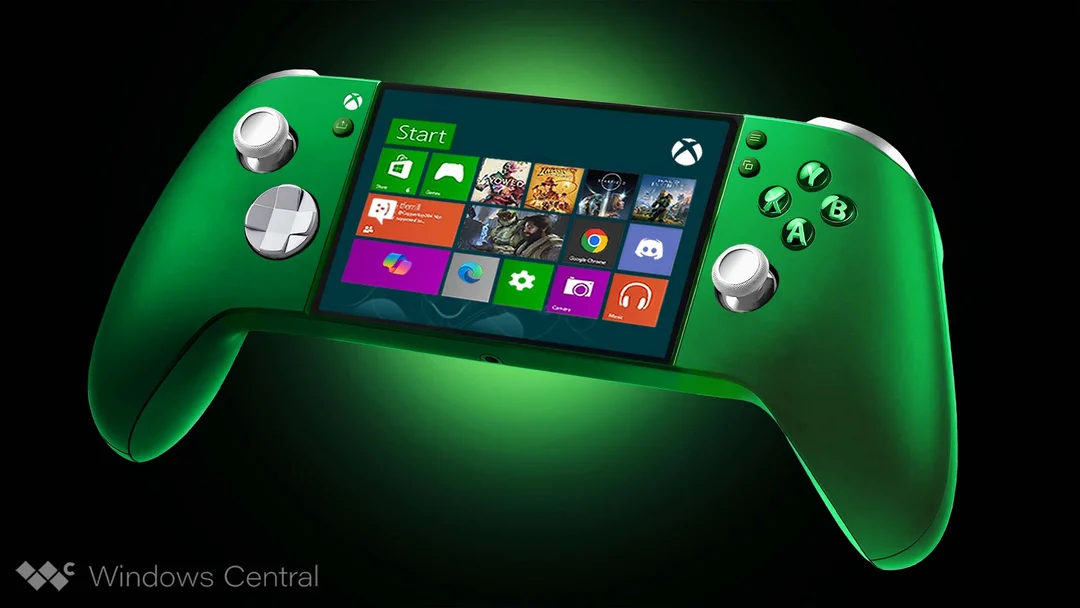
Xbox Handheld Plans Shift: Prioritizing Windows 11 Gaming on Partner Devices Like ASUS ROG Ally
The gaming world is buzzing with news regarding Microsoft's Xbox handheld plans. While initial reports pointed towards a native Xbox handheld console slated for a 2027 launch alongside the Xbox Series X successor, it appears the tech giant is re-evaluating its strategy, at least for the short term.
According to exclusive information from Windows Central's Jez Corden, Microsoft is now prioritizing improvements to Windows 11 gaming performance, specifically for devices like the ASUS ROG Ally and the upcoming "Project Kennan," a partner device with ASUS. This shift suggests a strategic pivot to bolster the Windows gaming ecosystem and address potential competition from SteamOS.

"Microsoft still wants to build its own Xbox handheld in the future," Corden notes, but added they have "decided to prioritize its teams to improve Windows 11 gaming performance, specifically for devices like the ASUS partner device 'Project Kennan.'" This decision appears informed by the growing presence of SteamOS, which some believe offers superior gaming performance compared to Windows 11.
The focus on partner devices like "Project Kennan" signifies a move towards leveraging third-party OEM handhelds. Microsoft is heavily invested in developing its Xbox gaming handheld technology, but the immediate priority is optimizing the software experience on existing and upcoming devices. The ASUS ROG Ally and Lenovo Legion Go, already running Windows 11, will benefit from improved Xbox layers and apps.
Leaked FCC pictures have surfaced of the "Project Kennan" device, hinting at a broader range of third-party Xbox hardware. This partnership approach might suggest Microsoft initially envisioned its handheld as a dedicated Xbox console-style experience but opted to focus resources on the partner opportunity with devices like Kennan.

Beyond handhelds, Microsoft is also developing next-gen Xbox cloud systems, currently undergoing testing at their Redmond headquarters. The goal is to reduce latency and achieve parity with NVIDIA's GeForce Now service, a leader in cloud gaming performance. This move responds to the competitive landscape, especially with NVIDIA GeForce Now launching a native app for the Steam Deck.
The increasing popularity of the Steam Deck and SteamOS presents a significant challenge to Windows' gaming dominance. Microsoft's recognition of this threat is evident in their renewed focus on optimizing Windows 11 for handheld gaming. Gamers can now install SteamOS on devices like the Legion Go and ASUS ROG Ally, resulting in enhanced battery life and performance, albeit with some limitations regarding access to certain services and launchers.
With an Xbox Showcase event slated for June 8, 2025, Microsoft is poised to unveil the latest additions to its vast gaming content portfolio. While the company's gaming content output is thriving, the hardware future remains somewhat uncertain. The potential for first-party hardware teams across Xbox and Surface is substantial, yet decisions regarding the growth of the Xbox brand might be influenced by corporate strategies.
Will these strategic shifts deliver the improvements that PC gamers are eagerly anticipating? Can Microsoft optimize its platform quickly enough to maintain its market position against competitors like the PS6, Nintendo Switch 2, and SteamOS? Time will tell.
What are your thoughts on Microsoft's revised Xbox handheld strategy? Do you think prioritizing Windows 11 gaming is the right move? Share your opinions in the comments below!